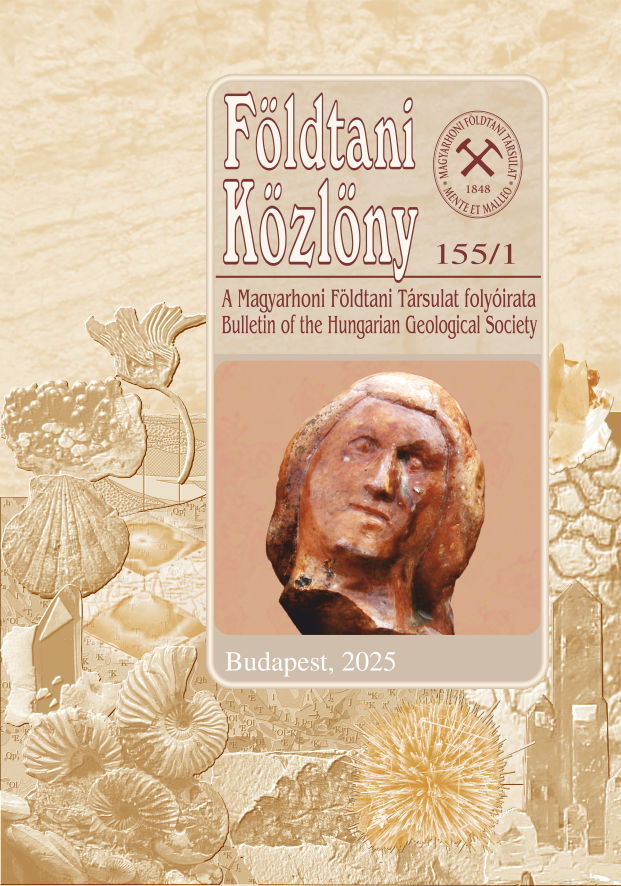Inorganic geochemical characteristics of the Upper Triassic rocks from borehole Rezi Rzt-1 (Kossen Formation, Keszthely Mountains, Hungary): a palaeoenvironmental study
Abstract
In this study inorganic geochemical data were used to elucidate palaeodepositional environments for
Norian-Rhaetian bituminous marls (Kossen Formation) in the Transdanubian Range of Hungary. Using
X-ray fluorescence and atomic absorbance spectrometry analyses and previously published total organic
carbon (TOC) data of the core samples from borehole Rezi Rzt-1 (Keszthely Mountains), the following
were compared major and trace-element patterns, sulphur (S), carbon (C), and selected redox-sensitive
trace-element relationships.
Relative to the post-Archean Australian average shale (PAAS), which provides a consistent
normalising scheme for the geochemistry of fine-grained sedimentary rocks, major and trace element
enrichment factors — both of the lower (201.0-265.0 m) and middle interval (73.0-201.0 m) of the Kossen
Formation from the Rzt-1 core — generally show similar distribution patterns. In the TOC-S crossplot,
a strong positive correlation (r=0.82) may indicate a C-limited marine depositional system. However, the
C-S-Fe relationships (e.g. TOC-S plot, Fe lot-TOC-S ternary diagram and DOP [degree of pyritization]
values) and Al-normalised redox-sensitive trace metal distributions (Cu, Ni, Pb, Zn, Cr and Co), suggest
that the lower and middle interval of the Kossen Formation accumulated under variable bottom-water
conditions. Persistently anoxic conditions (with a strongly stratified water column) prevailed during
accumulation of the lower interval of the Kossen Formation. Palaeoredox conditions may have been
intermittently dysoxic and anoxic during the deposition of the lower part of the Kossen middle interval;
and it is likely that conditions ranged from dysoxic to oxic, possibly being close to normal marine
conditions during times of accumulation of the uppermost part of the Kossen middle interval.











